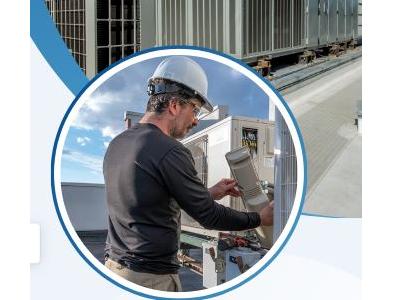
Tips for working with building control contractor as an HVAC TAB professional.
Working with a building control contractor for HVAC test and balance involves several important steps and considerations to ensure the system functions efficiently and meets the required specifications. Here are some tips to help you collaborate effectively:
1. Clear Communication:
- Establish clear lines of communication from the start. Know who the key contacts are and how they prefer to communicate (email, phone, site visits).
- Regular meetings or updates can help keep everyone informed about progress and any issues that arise.
2. Understanding Scope and Specifications:
- Make sure you fully understand the scope of the project and the specific requirements for the HVAC system. This includes design specifications, performance criteria, and any regulatory standards that must be met.
- Review the contractor’s plans and specifications in detail before work begins to ensure alignment with the project's goals.
3. Coordination and Scheduling:
- Coordinate schedules with the contractor to ensure that test and balance activities can be performed without delays. This may involve working around other ongoing construction activities.
- Be flexible but also firm in maintaining necessary schedules to keep the project on track.
4. Documentation and Record Keeping:
- Keep detailed records of all tests and adjustments made during the balancing process. This documentation should include airflow measurements, system adjustments, and any issues encountered.
- Ensure that all changes to the system are well-documented and communicated to the building control contractor for integration into the overall control scheme.
5. Use of Proper Tools and Techniques:
- Ensure that all tools and instruments used for testing and balancing are calibrated and suitable for the tasks. Accurate measurements are crucial for proper system balancing.
- Employ recognized standards and best practices for HVAC testing, adjusting, and balancing to ensure quality and compliance.
6. Troubleshooting and Problem Solving:
- Be prepared to troubleshoot and resolve issues as they arise. This might involve airflow problems, control system integration issues, or discrepancies between expected and actual system performance.
- Work collaboratively with the contractor to find solutions that meet the project requirements without compromising system integrity.
7. Training and Handover:
- Ensure that all parties involved are properly trained on the new systems, including any changes made during the balancing process.
- Effective handover includes training for the building's maintenance staff on how to operate and maintain the HVAC system efficiently.
8. Follow-up and Feedback:
- After the project is completed, schedule follow-up visits to ensure that the HVAC system is operating as intended. This may involve additional adjustments and fine-tuning.
- Provide feedback to the building control contractor about what worked well and what could be improved. This can help in refining processes for future projects.
By adhering to these tips, you can enhance the effectiveness of your HVAC test and balance efforts and ensure a successful collaboration with your building control contractor.




